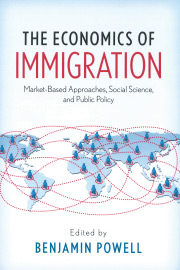The U.S. is on track for a record capital surplus! Sounds great, right? Now consider this: The U.S. is on track for a record trade deficit! It doesn’t sound so good, but the two mean pretty much the same thing. Whichever way you choose to say it, neither statement should be a cause for celebration or worry.
Newspapers around the country recently reported the Commerce Department’s new trade numbers. In July, the U.S. recorded a record $68 billion trade deficit, so we’re on track to surpass last year’s total trade deficit of nearly $717 billion.
News stories attributed the rising trade deficit to increased prices for foreign oil and other imports. But they neglected to ask fundamental questions about what a trade deficit really means and whether it is necessarily harmful.
The balance of payments accounting system has two major accounts: the current account and the capital account. The current account mainly measures trade in goods and services. The capital account mainly measures trade in assets. A trade deficit refers only to the current account balance.
Balance of payments accounting is done with a double-entry system of debits and credits. Each transaction involves both a debit and a credit.
Put simply, if you buy something from a foreigner, you must pay him—a debit is entered. Then the foreigner must somehow spend or save your payment—a credit is entered. When all credits and debits are added up, the entire accounting system must balance: The current account balance plus the capital account balance must sum to zero. Hence, a current account (trade) deficit implies a capital account surplus.
A trade deficit reflects the fact that we buy more goods and services from abroad than we sell to foreigners. Foreigners take the earnings they receive from our spending (minus the goods and services they buy from us) and invest that sum in the U.S. The U.S. has a wealth of investment opportunities, but we have a low rate of domestic saving, so lots of investments in the U.S. wouldn’t get funded if foreigners weren’t willing to supply us with their savings.
As long as our country remains a good place to invest and we have a low saving rate, foreigners are going to invest in the U.S. more on net than we invest overseas. That will generate a capital account surplus and the resulting trade deficit. This is a good thing.
When foreign investment increases our productive capacity, our economy can grow faster, enabling Americans to pay off any debts incurred. What about consumer debt? What if we borrow from foreigners to finance our consumption purchases? Is that part of the trade deficit bad? No. Every transaction summarized in the balance of payments is the result of individual transactions in which both parties to the exchange expected to benefit.
When a U.S. citizen finances a new car purchase, he does so because he values having the car now more than the amount he will have to pay back later. Does the outcome depend on whether he bought a Lincoln or a BMW? Buying a domestic Lincoln wouldn’t affect our trade deficit, but buying a foreign BMW would.
But whether the payment is to a foreigner or to a fellow citizen, the customer’s purchase still indicates that he deems himself better off from the transaction.
Sometimes the twin deficits—budget and trade—move in the same direction. When a government issues a lot of debt and there aren’t enough domestic savers to buy it up, a budget deficit will contribute to a trade deficit. That’s simply because the foreign purchase of bonds is recorded in the capital account.
After governments issue too much debt, they often harm their economy by inflating the money supply or raising tax rates to try to pay their debts. However, these problems stem from the budget deficit and the accumulated debt—not who finances the debt. In this way, a trade deficit can be a symptom of fiscal problems, but the trade deficit isn’t the problem per se. It’s the budget deficit that’s the problem.
Ultimately, most of the trade deficit results from voluntary market transactions, where both parties benefit from the sale of goods and assets. Adding up every transaction doesn’t suddenly eliminate the gains from trade just because U.S. citizens bought more goods and services than they sold.












